Our visit to a secret Soviet radio telescope and the former closed town of Irbene
Irbene, which takes its name from the nearby coastal Irbe River, is a purpose-built town established to accommodate the military personnel, scientists and sundry workforce who were employed at the nearby Soviet radio astronomy centre known as Zvaigznīte, meaning “Little Star”. Both the town and Zvaigznīte were top secret and not marked on any map, and the latter was used by the USSR to intercept Western Europe (NATO) communications during the Cold War.
The espionage centre originally consisted of three radio telescopes and a communication base. The radio telescopes were called RT-32, RT-16 and RT-08 respectively, a reference to the diameter of each saucer in metres. A tunnel connected RT-32 with RT-16.
Of the three radio telescopes, the RT-32 was the most impressive. In fact, with over 20,000 components and a central cone weighing 80 tonnes (the whole thing comes in at around 650 tonnes), the fully steerable parabolic telescope was state of the art at the time and among the top five most powerful radio telescopes in the world.
A radio telescope is an antenna that detects and records radio waves from objects in space, whereas a radar consists of a radio transmitter used to locate and track objects (such as an aircraft or a submarine) that are a considerable distance away.
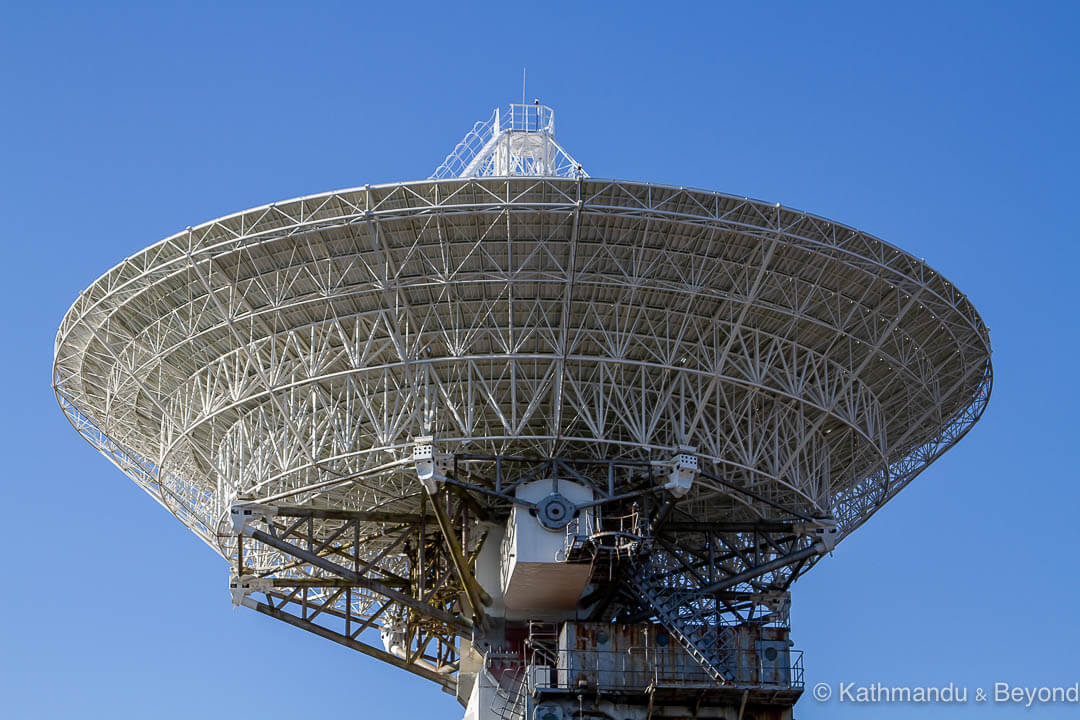
The spy station was up and running by 1967 and thereafter work began of the construction of the support town of Irbene.
From Cape Kolka, a peninsula where the Gulf of Riga meets the Baltic Sea, to the outer reaches of the city of Ventspils (these days, Latvia’s sixth largest metropolis), the local residents from surrounding villages were relocated and the area was completely sealed off to the outside world. Cape Kolka was also used by the Soviets as an off-limits military base and the distance from there to the turn off for Irbene is approximately 50kms. The almost-entirely straight and broad road that links the two locations also doubled as a runway for Soviet aircraft. Dense pine forest intensified the region’s secrecy and it is said that not even the political hierarchy within the Estonian SSR knew of its existence because all of the scientists, servicemen and supporting staff, including those with the most menial of jobs, were brought in directly from Moscow.
Soon, the classified town of Irbene, which is just 1.5kms from the telescopes, comprised a number of apartment blocks, as well as a kindergarten, sports centre, an officers’ club and a general store that was apparently well stocked with provisions (*). At its peak, the town had around 3,000 inhabitants.
(*) There was often a limited choice and a lack of basic consumer goods in the USSR. But not in Irbene, seemingly.
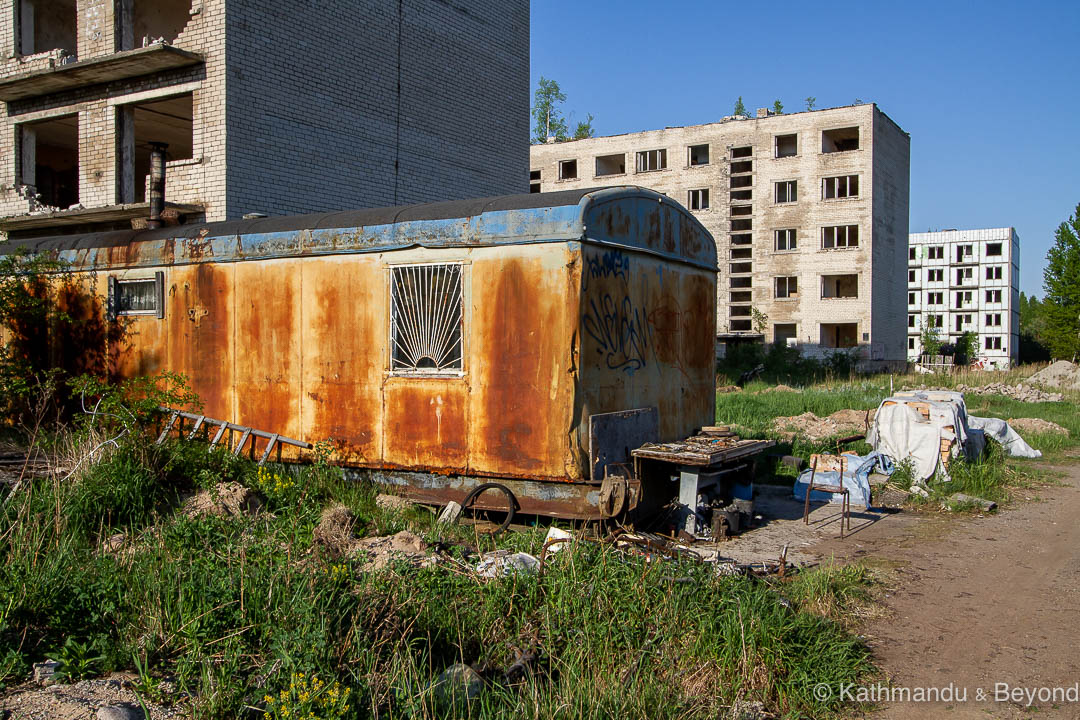
Although the Soviet Union started to collapse in the final years of the 1980s and Moscow officially recognised Estonia’s independence in September 1991, the Russian military did not leave the area until 1993. The reason for this is the Latvian Academy of Science wanted the telescopes for their own (peaceful) research purposes. Assurances were given that the spyware would not be used against Russia and the request was approved. However, the Russians clearly didn’t completely trust the newly formed Baltic state and as well as rendering two of the telescopes (RT-32 and RT-16) totally unusable and dismantling the third (RT-08), they also took away the operating manuals and kept military personnel on the ground for a period of time in case the infant country reneged on its assurances.
Eventually, the Ventspils International Radio Astronomy Centre was established in 1996/7. This new institution took control of the two remaining radio telescopes, RT-32 and RT-16, and had the unenviable job of repairing them, a task that took several years to complete given how badly both were damaged combined with the fact that they had no technical paperwork to assist them. The dismantled RT-08 was never found – either it was taken back to Russia or buried somewhere in the vicinity.
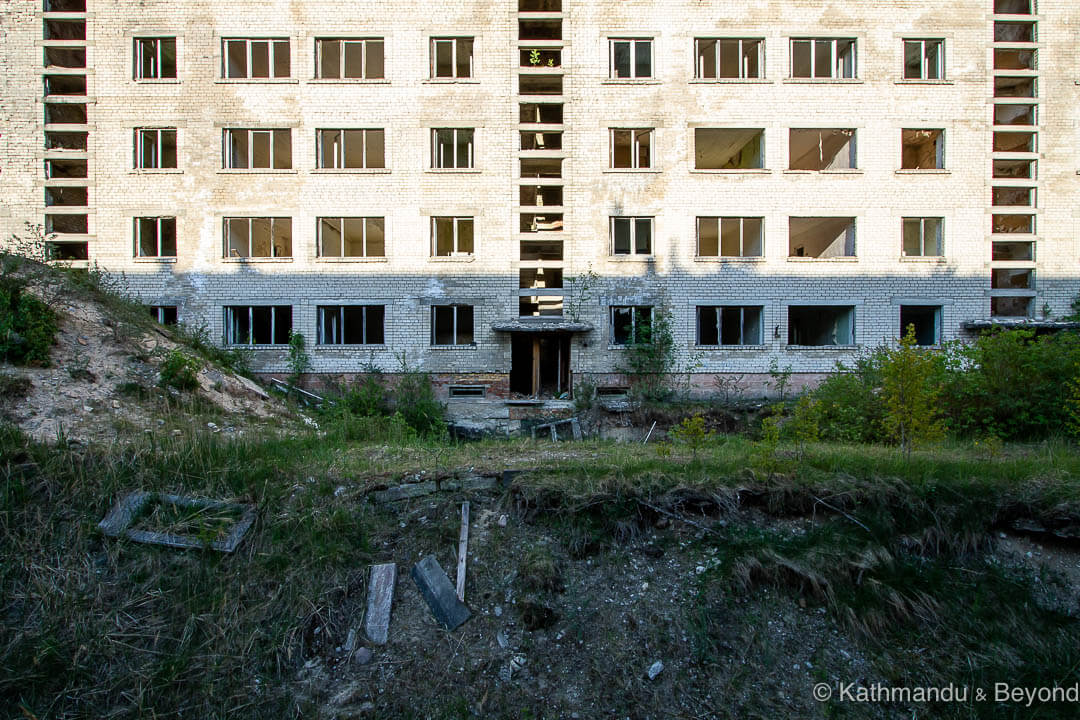
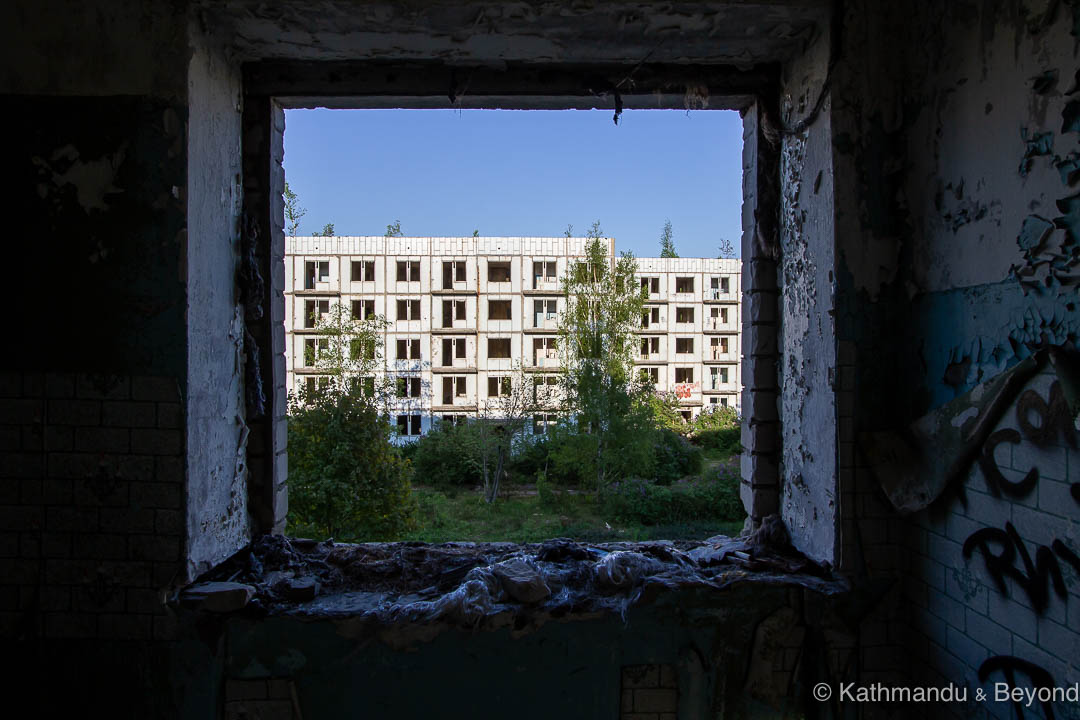
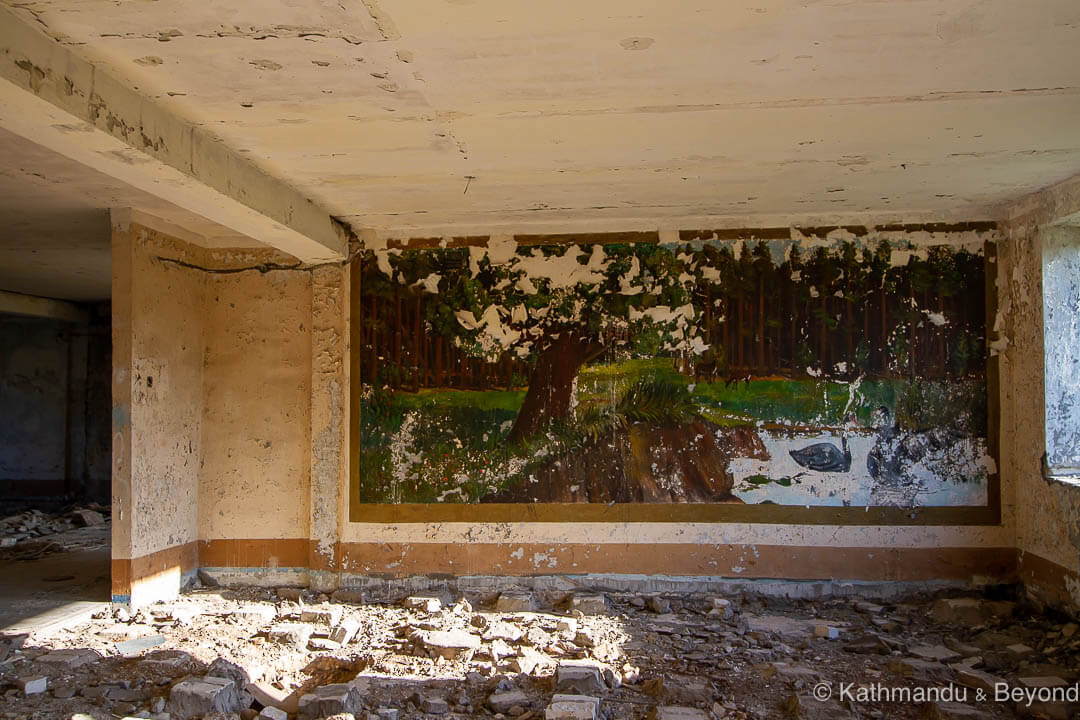
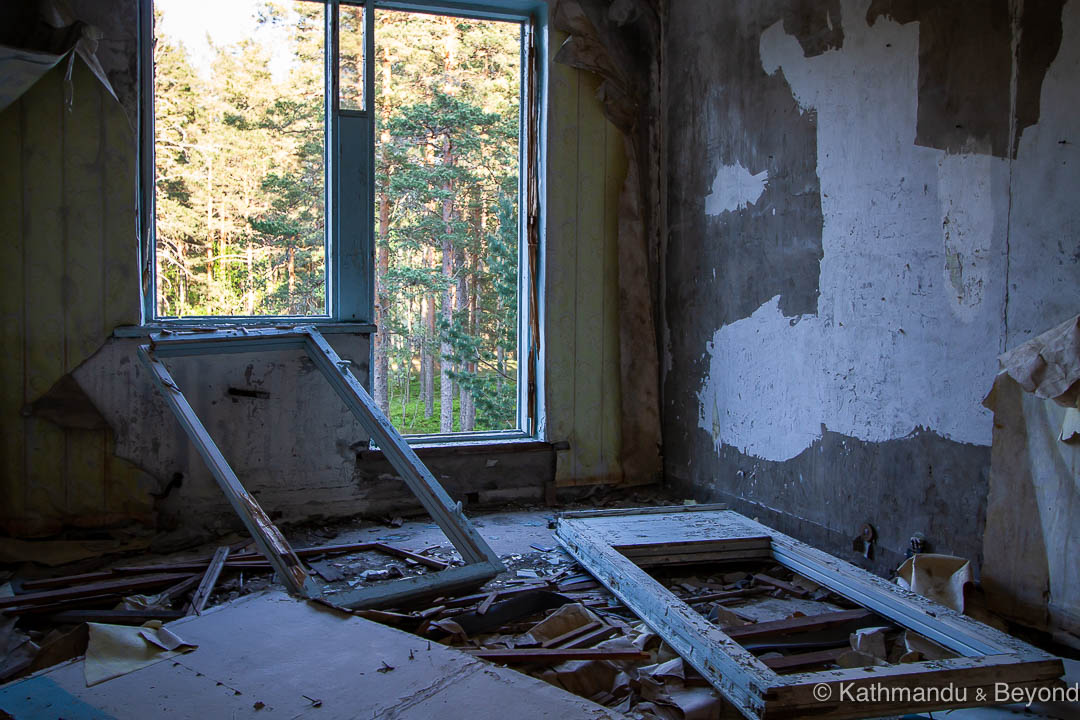
When the Russian military finally left, the town was in excellent condition. The buildings were in good shape and utilities such as plumbing, electricity and water were still fully functional. But, with nobody living there and left unguarded, it didn’t take long for this off-the-map settlement to become less of a secret. Soon, scavengers and looters move in and dismantled/ took away anything that could be sold or used elsewhere.
The opportunists did a good job of plundering the town and, today, what remains looks like a film set for a post-apocalyptic movie. The empty shells of a handful of buildings are now the town’s most dominating feature. Even the floors have been ripped up and the housing units themselves are barely recognisable. One of the apartment blocks is slowly being engulfed by a mound of earth, which makes it photogenic in the late afternoon light, and it is possible to just about make out the remains of a painted mural depicting a forest scene in what was presumably the kindergarten. But, overall, it is the history and secrecy attached to what’s left of Irbene that makes it a worthwhile stopover if travelling around this region of northern Latvia.
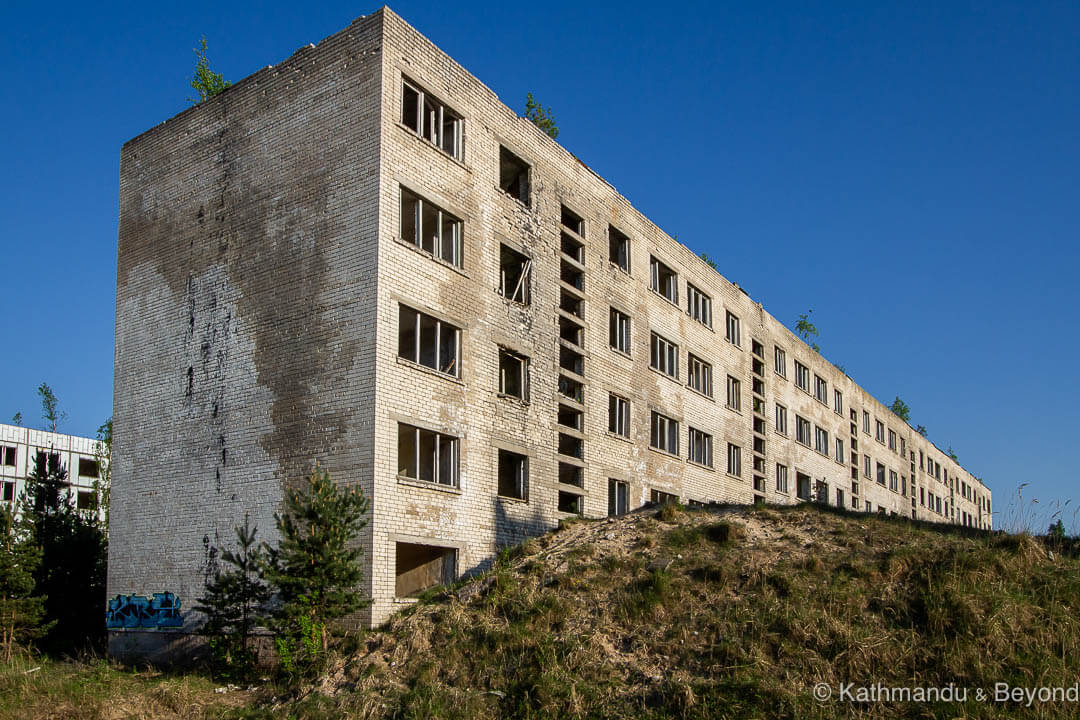
What’s more, during summer months (from 1st May onwards), it is possible to take a guided 1½ hour tour of Ventspils International Radio Astronomy Centre. This is a further justification for diverting off the gloriously smooth and wide road that links Kolka with Ventspils and bumping along the now-broken track that passes a couple of dilapidated guardhouses en route to these vestiges of the Cold War era.
You will either need to take a tour or have your own wheels to reach these two locations as there is no public transport. Even if you don’t take a pre-arranged tour of the astronomy centre, you are free to take photos from outside the fence that surrounds the base. Be prepared to get plenty of sand in your shoes, however, as it is necessary to traverse sand dunes to get a decent view!
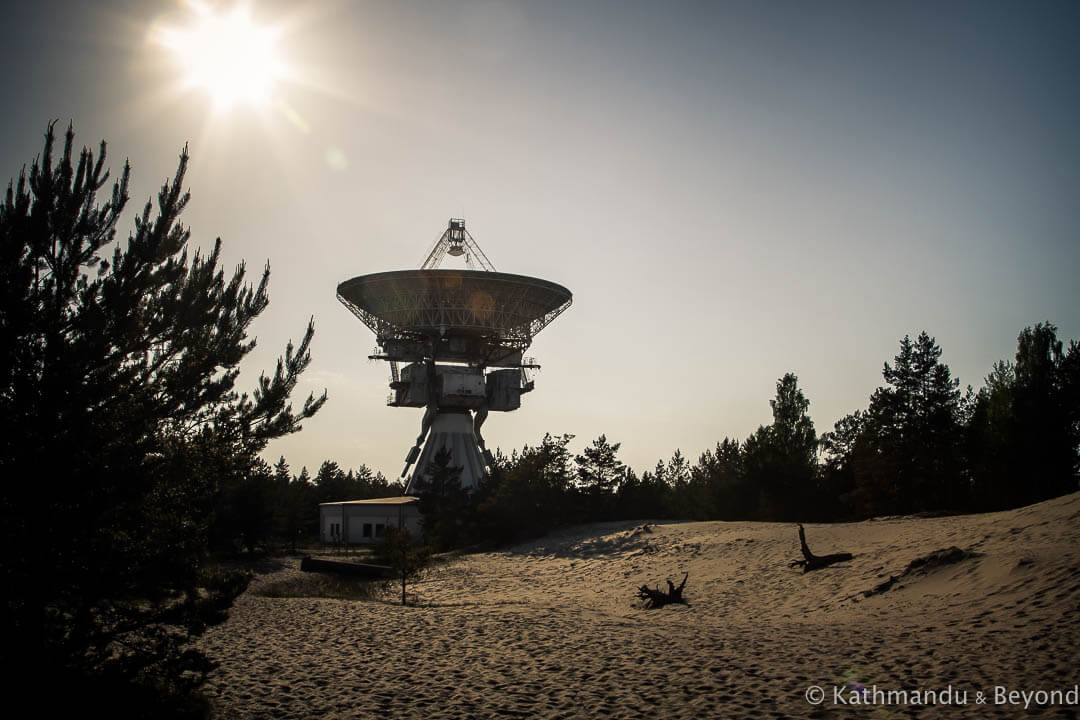
How to get to Irbene and Ventspils International Radio Astronomy Centre
Based on our experience, you are free to explore what is left of Irbene, at your own risk of course, and enter any building that takes your fancy. As mentioned in our post about lesser-visited places in the Baltic States, we came across, what appeared to be a caretaker and there were also signs of demolition work being undertaken in and around the town. Parts of Irbene have already been knocked down and it might not be long before the rest meets the same fate.
The GPS coordinates for Irbene are 57.564969, 21.864208
Ventspils International Radio Astronomy Centre is a further 1.5kms along after passing through the remains of the town.
Sources and further reading
Sputnik News

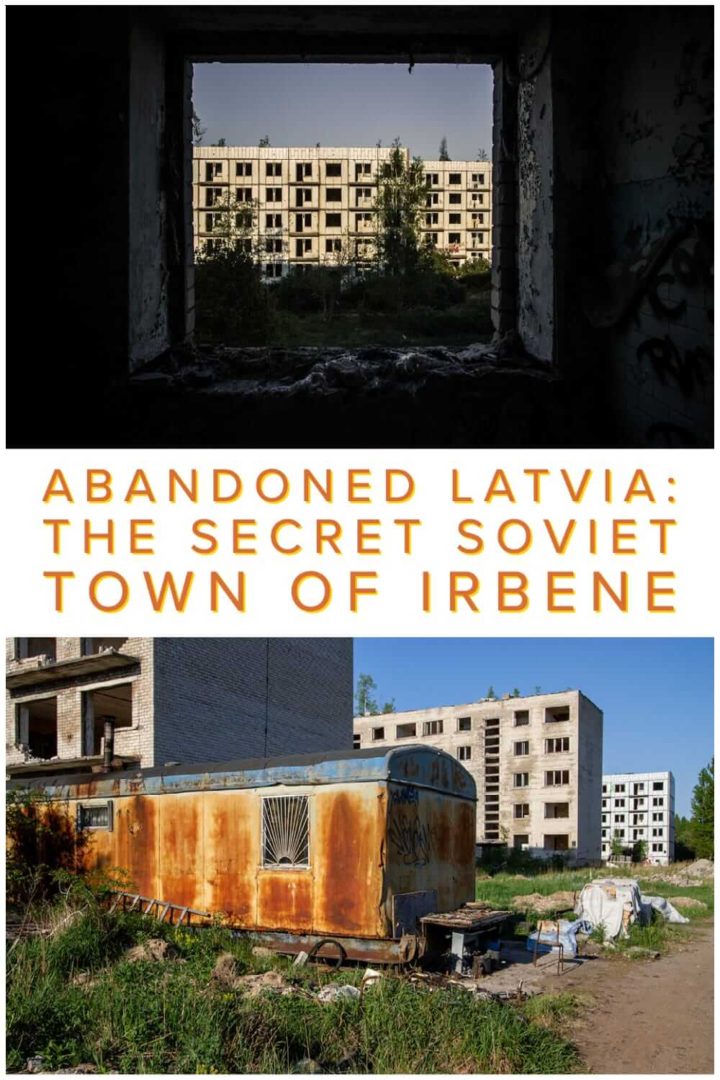
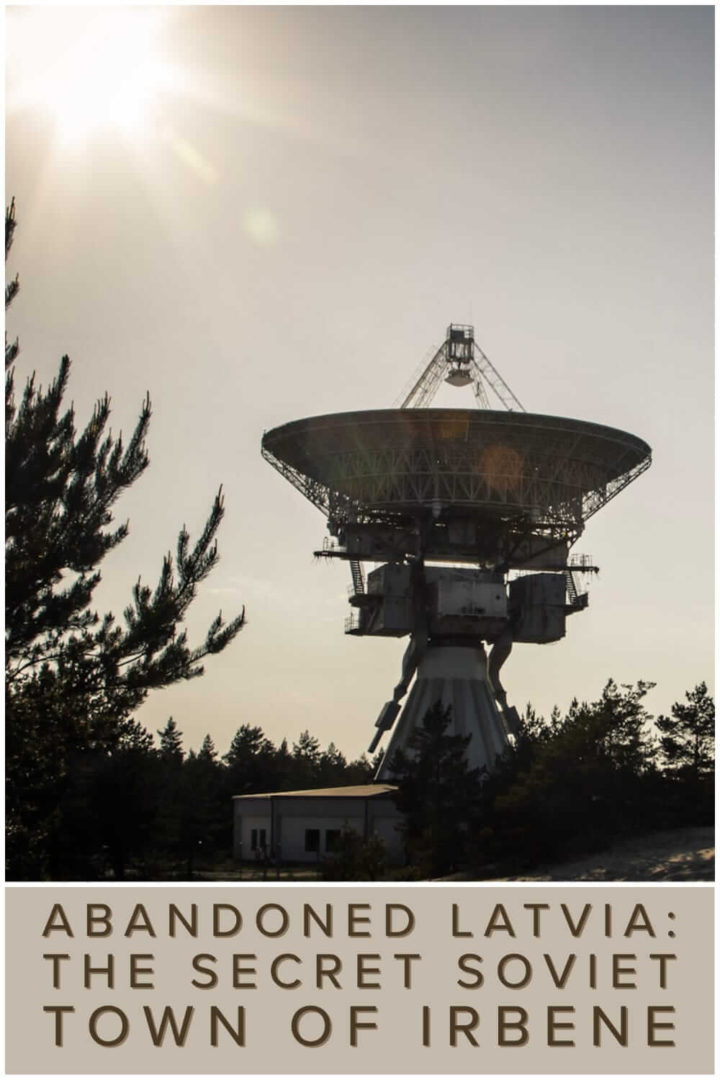
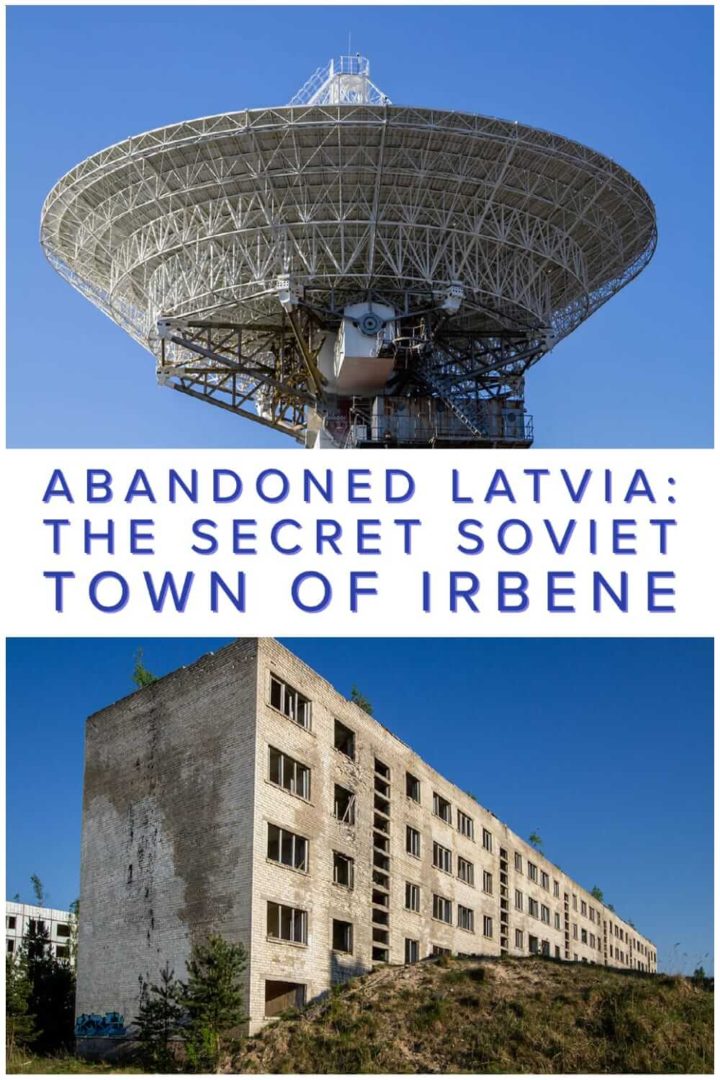
Trackbacks/Pingbacks